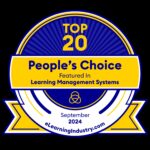Understanding the Specific Learning Disability Definition is crucial for educators, parents, and anyone involved in supporting learners. A specific learning disability (SLD) is defined as a disorder in one or more of the basic psychological processes involved in understanding or in using language, whether spoken or written. This can manifest in various ways, impacting an individual’s ability to listen, think, speak, read, write, spell, or perform mathematical calculations. Conditions such as perceptual disabilities, brain injury, minimal brain dysfunction, dyslexia, and developmental aphasia are included within the scope of SLD.
It’s important to distinguish SLD from learning problems that arise primarily from other factors. Difficulties in learning that are mainly due to visual, hearing, or motor disabilities, intellectual disability, emotional disturbance, cultural factors, environmental or economic disadvantages, or limited English proficiency are not considered specific learning disabilities. This distinction ensures that the focus remains on intrinsic processing disorders rather than external factors affecting learning.
Specific learning disabilities are neurodevelopmental disorders that affect the brain’s ability to process information. These processing issues can interfere with learning basic skills such as reading, writing, and math. While the term “specific learning disability” is an umbrella term, it encompasses several distinct conditions, each with its unique challenges. For instance, dyslexia primarily affects reading, dysgraphia impacts writing abilities, and dyscalculia hinders mathematical skills. Recognizing these specific manifestations is key to providing targeted support and interventions.
Early identification and intervention are paramount for individuals with SLD. Comprehensive assessments by qualified professionals can help pinpoint specific areas of difficulty, paving the way for individualized education programs (IEPs) and tailored teaching strategies. These strategies often involve multisensory approaches, explicit instruction, and assistive technologies designed to bypass processing deficits and build upon strengths. Resources and support networks play a vital role in empowering individuals with SLD to achieve their full potential. Numerous organizations and educational bodies offer guidance, tools, and communities for learners, families, and educators navigating the landscape of specific learning disabilities.
In conclusion, the specific learning disability definition highlights a neurologically-based condition affecting cognitive processing and academic skills. It is not a result of other disabilities or disadvantages, but rather a unique set of challenges requiring specialized understanding and support. By gaining a deeper understanding of SLD, we can better advocate for and empower individuals to overcome learning obstacles and thrive academically and personally.
